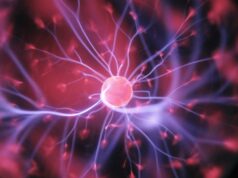
Psychiatric populations perceive the therapeutic use of repetitive transcranial magnetic stimulation (rTMS) for mental health conditions to be beneficial, safe, and no more dangerous than conventional therapy options like medication—as indicated by a systematic review published in the peer-reviewed journal Neuromodulation: Technology at the Neural Interface.
The review also concludes that, while the positive participant attitudes and experiences observed support the clinical implementation of rTMS, future work is now needed to determine perceptions of this therapy across a broad range of conditions, such as chronic pain.
“This systematic review indicated that participants with psychiatric conditions who engaged in rTMS were well-informed and educated regarding the procedure, perceiving it to be safe and beneficial,” Georgia Stillianesis (Western Sydney University, Sydney, Australia) et al write. “Participant attitudes and experiences were positive, reflected by low levels of fear and their willingness to recommend the intervention to others.”
Non-invasive brain stimulation techniques like rTMS are currently considered the gold standard therapy for pharmacologically resistant depression, and the success of this treatment has led to its uptake in other central nervous system disorders including chronic pain, stroke and Parkinson’s disease. Key benefits associated with these treatments include the fact that they are pain-free, require no surgical procedure, and are relatively inexpensive compared to invasive forms of brain stimulation, such as intracranial stimulation. The review’s authors state, however, that—despite an emerging body of evidence demonstrating the safety and effectiveness of non-invasive brain stimulation—the clinical application of this intervention remains “relatively limited to research settings and psychiatric conditions”, with their systematic review being “the first to synthesise data exploring patient perceptions regarding the therapeutic use of non-invasive brain stimulation”.
In the report, Stillianesis et al detail how a systematic, online search of the Cumulative Index to Nursing and Allied Health Literature (CINHAL), PubMed, Web of Science, and Medline, was performed, in addition to screening the reference lists of relevant articles, to build up data for the review. Studies exploring participant perceptions—divided into the three domains of knowledge, experience, and attitudes—regarding the therapeutic use of non-invasive brain stimulation were considered eligible for inclusion.
Under this methodology, four full-text studies comprising data from 163 participants met the authors’ inclusion criteria. The participants across these four studies had received rTMS to treat a range of conditions—most commonly for treatment-resistant major depression (79.9%, n=135), but also obsessive-compulsive disorder (OCD), somatoform disorders and schizophrenia in some cases. Overall, 58% (n=96) of the participants were female, with the mean age across the three studies that reported the age of participants ranging from 20–49 years.
Regarding knowledge of rTMS, the review found participants held generally high levels of knowledge of the treatment, and its safety and potential indications for administration, with the majority (91%, n=87) of participants across three of the four eligible studies being able to correctly define rTMS, and most of the participants in one study being aware of the time (97.5%, n=39) and frequency (90%, n=36) associated with the procedure—as well as the fact it needs to be administered by a trained health professional (95%, n=38). Stillianesis et al suggest, however, that one plausible reason for this finding may be the ethical requirement for individuals to be informed about the nature, risks, and potential side-effects of the intervention prior to consenting to participate.
The systematic review found the majority of participants in three of the four studies held positive attitudes toward rTMS, reporting it to be humane (98%, n=94), not cruel (97%, n=93), sophisticated (100%, n=48) and modern (92%, n=44). The report also notes that a minority of participants believed rTMS should be outlawed (6%, n=6), although no additional information was provided as to why this should be the case. Furthermore, most of the participants in one of the studies stated they would recommend rTMS to a close relative or friend (72.5%, n=29), and similar findings were seen in two of the other eligible studies—with the majority adding that they would only endorse the treatment if it was recommended by a physician (86%, n=48).
All four studies gathered participant experiences of rTMS after it was administered, with three assessing the application of the same rTMS device (Magstim), and the other comparing experiences of rTMS delivered via three different devices (Magstim, NeuroStar and Brainway Deep TMS H-Coil System). While two of these studies demonstrated lower levels of fear after rTMS when compared to pre-treatment fear levels, one reported no changes in fearfulness among participants, with an equal number reporting being somewhat fearful before and after receiving treatment. In terms of treatment effectiveness, one study reported that the majority of participants (63%, n=30) considered rTMS to be effective, with slightly more than half (56%, n=27) of the participants in two of the other studies reporting that they were undecided, or unsure. In their report, Stillianesis et al note: “Interestingly, participants who reported higher levels of improvements were more willing to receive subsequent treatment.”
The review’s authors also state that, while most experiences regarding rTMS were found to be positive, one study demonstrated that some participants “actively concealed” their involvement in rTMS (19%, n=9). Stillianesis et al allude to evidence suggesting that the historical depiction of brain stimulation techniques—as well as electroconvulsive therapy, which is often wrongly conflated with non-invasive brain stimulation—has created a stigma regarding its utilisation, but add that the participants’ motive for concealment may also be more closely associated with the stigma of their mental illness, rather than attitudes towards rTMS itself.
As well as concluding that most of the participants in their review perceived rTMS to be safe and beneficial, and demonstrated low levels of fear and were willing to recommend the intervention to others, Stillianesis et al state that future work is needed to determine participant perceptions of rTMS across a broad range of conditions, including non-psychiatric populations. “Emerging evidence suggests rTMS is well-tolerated in these populations,” the authors write. “A recent study, published after the completion of our advanced search, supports this notion, demonstrating that stroke patients have positive experiences with rTMS—they reported no unpleasant aspects and attributed their improvement in function to the treatment”.
In addition, the report notes that its search found no studies investigating patient perception of transcranial direct current stimulation (tDCS), and that further investigation to elucidate participant perceptions of other non-invasive brain stimulation devices that have therapeutic applications “is warranted”.













